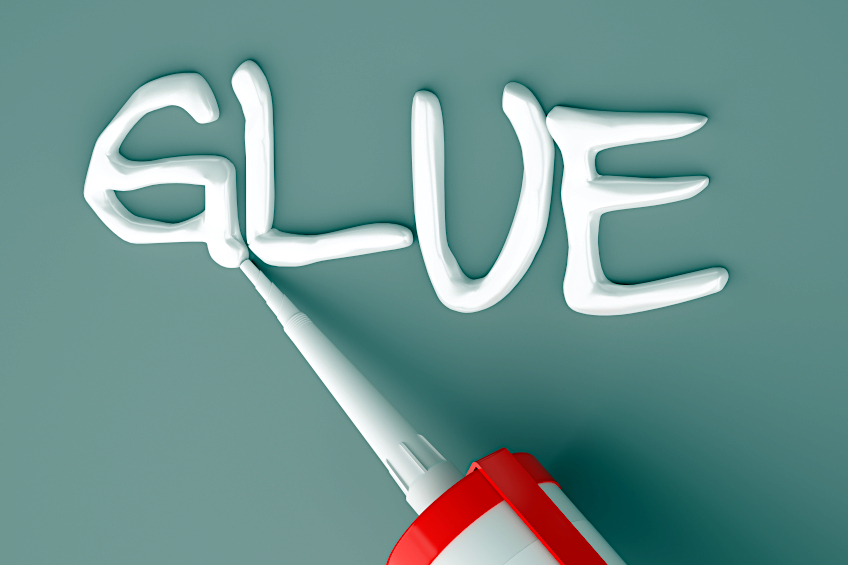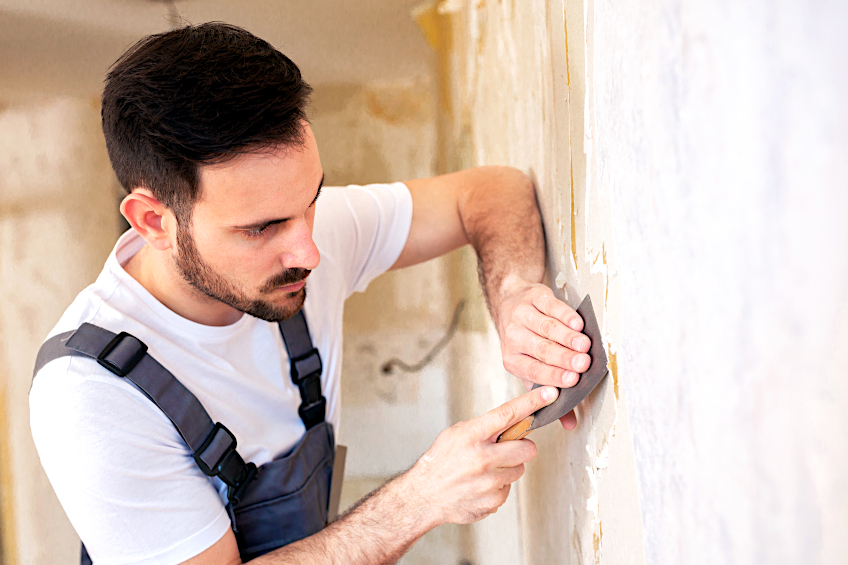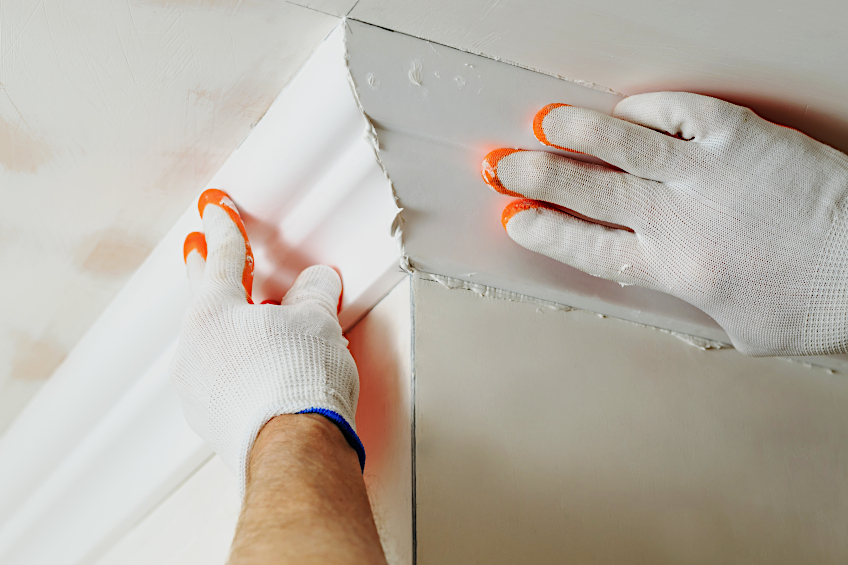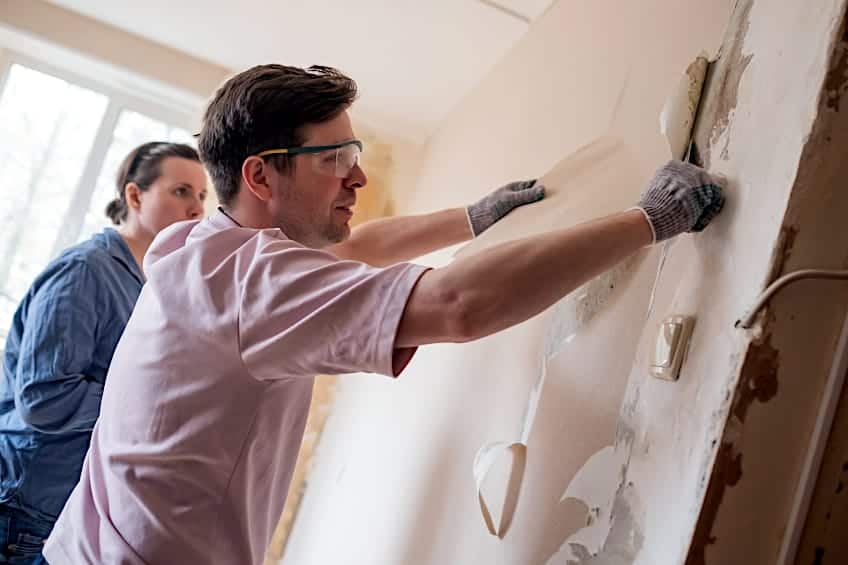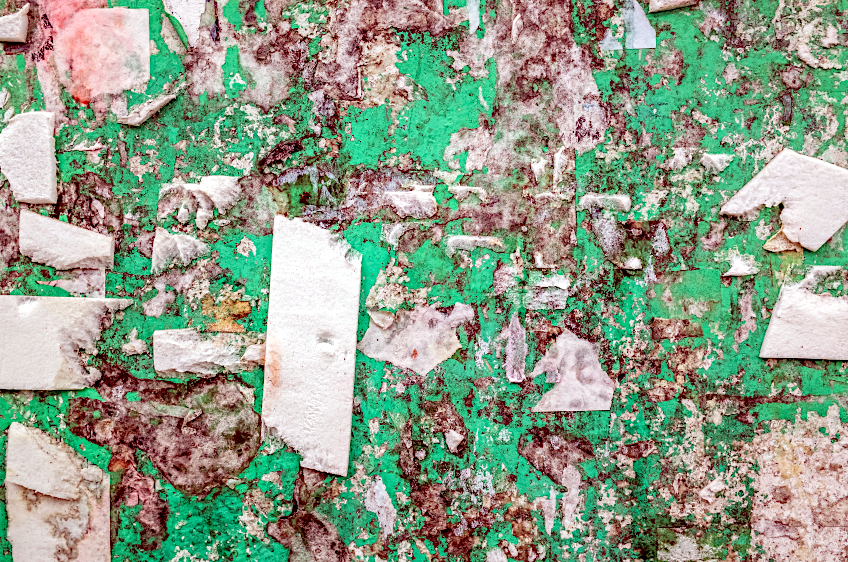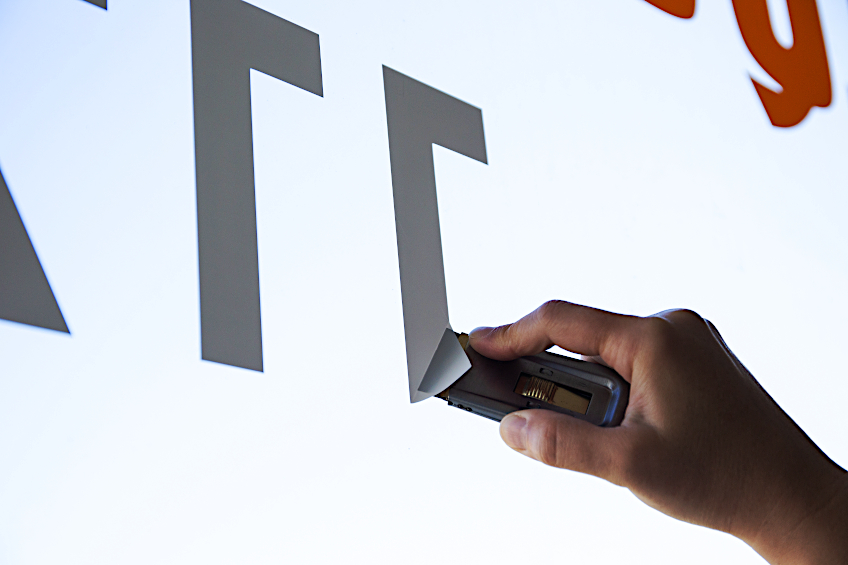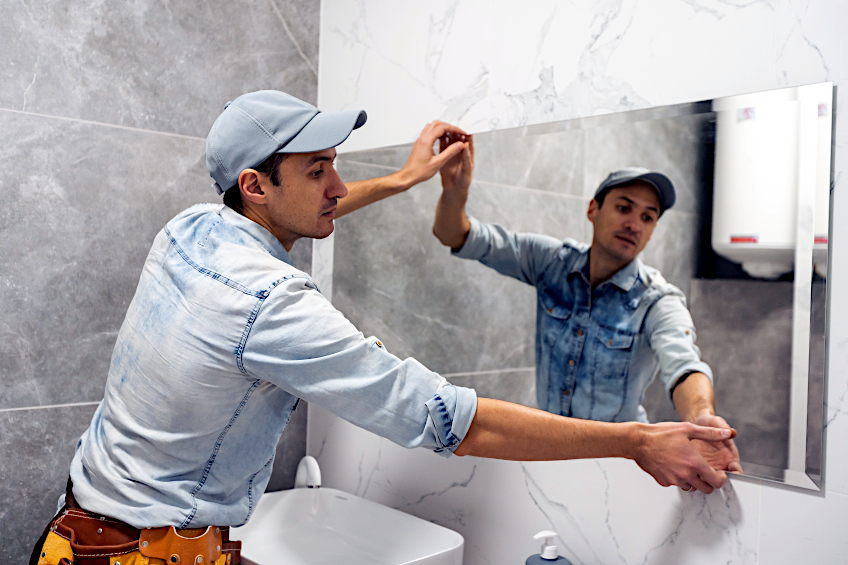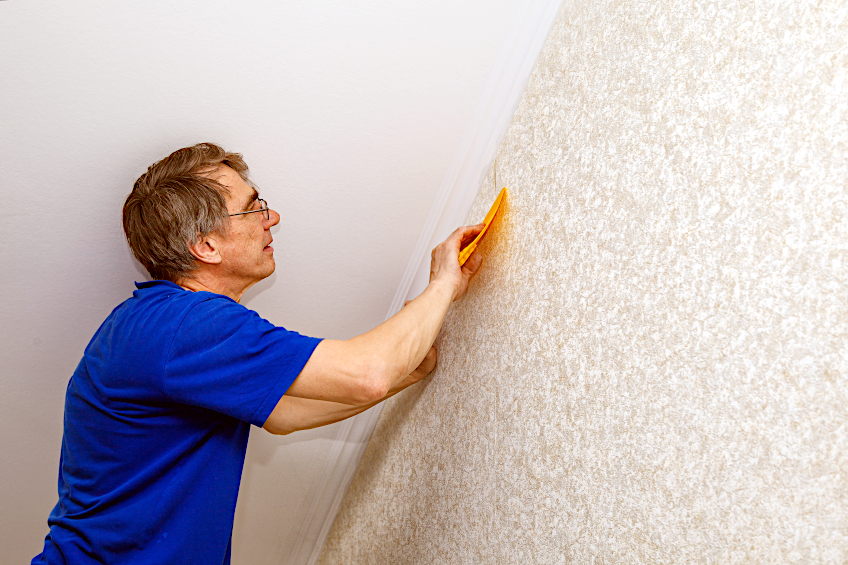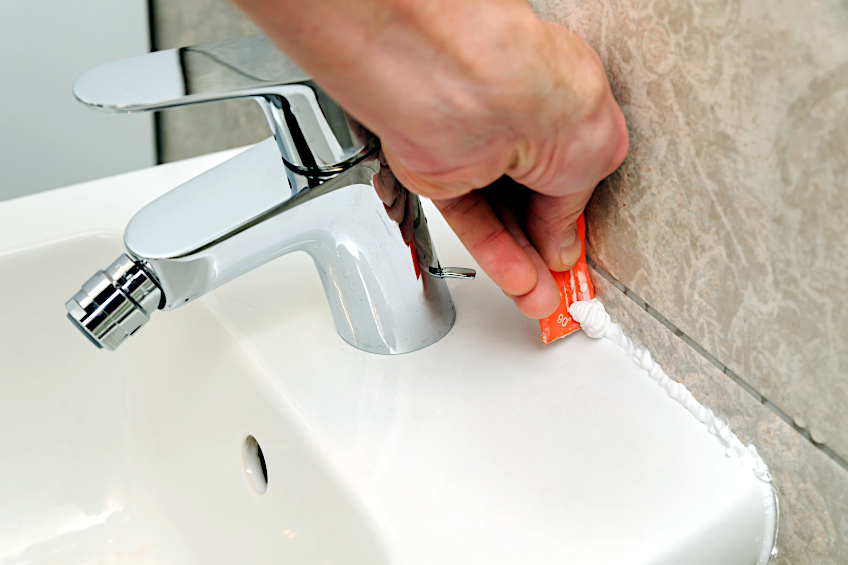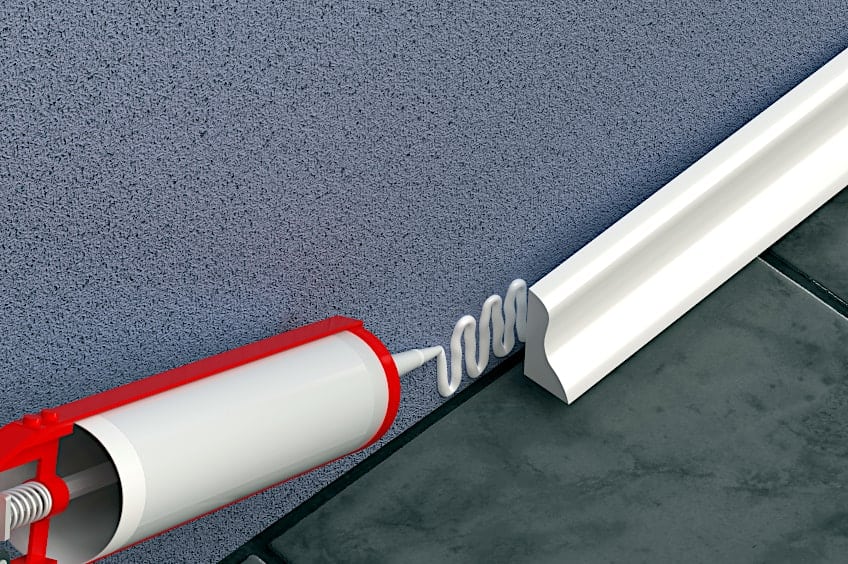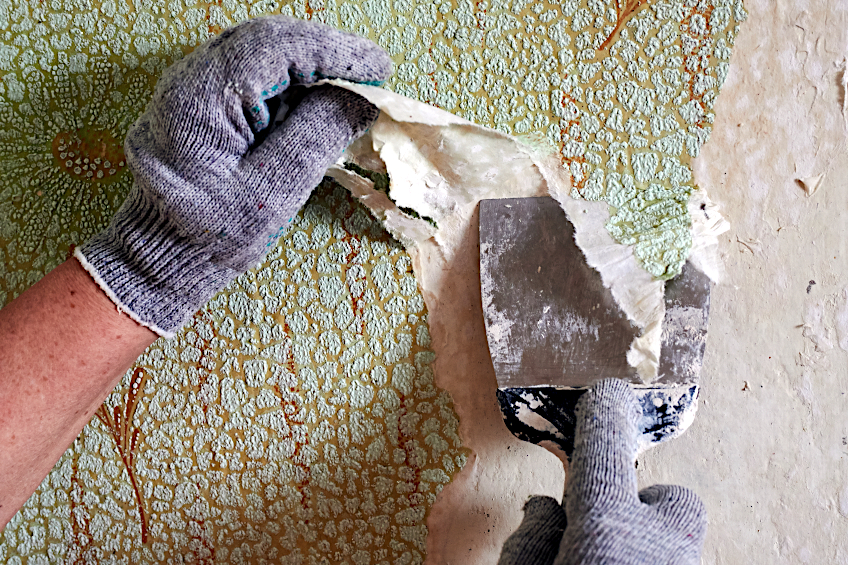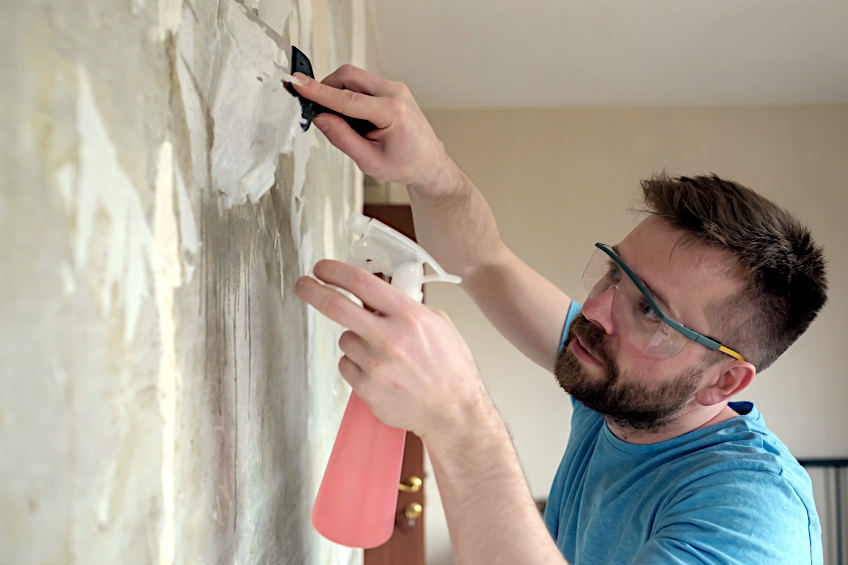How to Get Adhesive off Wall – Our top Glue Removal Tips
This post may contain affiliate links. We may earn a small commission from purchases made through them, at no additional cost to you. You help to support resin-expert.com
If you’ve ever gotten glue on your fingers while trying to use it, then you know just how frustrating it can be to remove. Everything you touch gets glue on it, your clothes can get sticky, and all the surfaces you’ve touched end up with unsightly stains on them. It can be particularly annoying if you’ve touched a newly painted wall and the adhesive you’ve used simply won’t cut off. For these reasons, we’ve decided to help you out by covering some of the most commonly used adhesives and how to get rid of them if you ever find yourself or your workpiece attached to something it shouldn’t be. Primarily, we’ll be having a look at how to get adhesive off wall surfaces, as well as some adhesives you’re likely to come across on these surfaces in order of likelihood.
Why Would You Need to Remove Adhesive From Wall Surfaces?
It’s not something that most of us think about often but removing adhesive residue from a wall can be frustrating, especially if you don’t know how to go about it. Are you wondering how to get adhesive off wall surfaces? Do you just use soap and water? Do you need a solvent? How will the glue react to an alcohol solution?
These are all great questions, and this is why we’ve listed a couple of common scenarios where you’d need to remove adhesive from wall surfaces and whether or not it’s possible.
Excess Adhesive
Before we get into how to get adhesive off wall surfaces let’s have a look at why you would need to do so in the first place. Well, the truth is that unless you’re using something like double-sided tape, you’re going to have at least some adhesive squish out when adhering one surface to another. Typically, you’d remove the excess with a cloth as soon as possible, but more often than not a little remains behind, which can be an eyesore.
Remodeling Old Walls
Another common occurrence is needing to remove old adhesive residue from old walls. This is pretty common for new homeowners or contractors who are remodeling an old home. Why? When wallpaper is installed it’s pretty easy to get some of the wallpaper adhesives on the floor, walls, and even on the front-facing paper.
If your intention is to save the wallpaper or paint, you will need to remove the adhesive correctly.
Old Tape Residue
An example of surfaces that most can all relate to is tape residue. Whether you have kids that love to put posters up on the bedroom walls or you remember doing the exact same thing as a teenager, you probably know that removing tape residue can be a challenge. There are two ways to go about removing tape residue from walls, one that involves a solvent and the other that requires some good old-fashioned elbow grease (and soapy water).
Removing Vinyl From Sheetrock
Do you have sheetrock walls? Have they been covered in vinyl for years? Do you want to remove it to accommodate a new look? Well, the good news is that it’s entirely possible. The bad news is that you’re going to encounter some sticky residue once the vinyl has been removed. This can be tricky to remove as vinyl is usually applied to sheetrock with an industrial-grade adhesive. You may also have a house with walls covered in all those trendy vinyl decals that have overstayed their welcome.
These can be easier to remove with a precision scraper, but just take care if you don’t want to have repaint every wall after you’re done.
Removing Glued Mirrors
Another common scenario in which you’d find yourself needing to remove some sticky stuff from your walls is when removing mirrors. Why would someone stick a mirror to a wall instead of using a nail or screw you ask? Well, if you want a mirror perfectly flat against the surface, or if the mirror itself is purely for aesthetic purposes, using an adhesive is the easiest and most cost-effective way to go about it. Other reasons included a wall surface that is unable to bear a load or a custom mirror without a hook recess.
Why Is Knowing How to Remove Adhesive Residue Important?
You might be asking yourself why you need to know how to remove adhesive residue, after all, it’s just glue, right? Well, while it might all seem like sticky stuff that makes your life a bit easier at times, when removing adhesive from wall surfaces, doing so incorrectly could result in making the situation worse or ruing the surface you’re trying to restore.
You should also be aware that certain adhesives react negatively when it comes into contact with solvents and/or cleaning chemicals. This is why it is important to consider the type of adhesive you are trying to remove as well as the chemicals you’re going to use to remove it. The best way to go about this is to use products that have been produced specifically to dissolve the adhesive in question.
Failing to do so can result in inadvertent chemical reactions, which can damage your surface or cause potentially harmful chemicals to be released into your immediate environment. This being said, you should always ensure that the area you’re working in is well-ventilated and that the environment has a consistent airflow.
How to Remove Adhesive From Wall Surfaces
The trick with removing adhesive from wall surfaces is that there are different types of adhesives, all of which have different techniques and applications in order to be removed. This is why we’ve created a small table detailing some of the adhesives you could encounter as well as the best products you can use to remove them. We’ve also included a few short tutorials detailing the best ways to go about implementing these products.
| Type of Adhesive | Best Means of Removal |
| Wallpaper Glue | Hot water, dishwashing liquid, vinegar, fabric softener, clothing steamer |
| Stickers | Rubbing alcohol, dishwashing liquid, hot water, paper towels, hairdryer, WD40, peanut butter |
| Adhesive Tape | Rubbing alcohol, dishwashing liquid, hot water, paper towels |
| Sheetrock Glue | Clean cloth, mineral spirits, adhesive solvents |
| Glue Stick Glue | Clean cloth, rubbing alcohol, Q-tips, plastic scraper |
| Blue Tack | Rub with blue tack to remove majority, use mineral turpentine and/or cleaning benzine to remove excess |
| Double-Sided Tape | Clean cloth, rubbing alcohol, Q-tips, plastic scraper |
| Wood Glue | Cotton bud, clean cloth acetone, nail polish remover, water, hairdryer |
| Epoxy Adhesive | Vinegar, acetone, clean cloth |
How to Remove Wallpaper Residue From Walls
Removing wallpaper glue might seem like a huge undertaking, but in reality, it’s fairly easy, and all you really need to do is put in some elbow grease. Before you get to cleaning the sticky residue off your walls you should lay down a tarp or some newspaper on your floor and the surrounding area to ensure that no cleaning products or cleaning agents ruin your flooring.
Once your wallpaper has been removed and your floor has been covered, it’s time to get down to business. First, mix some vinegar or baking soda with some hot water, ensuring that you have one cup per gallon. Next, all you need to do is use a sponge or cloth to apply this mixture to your walls and allow it to soak in.
Once it’s all soaked in, you can use a plastic scraper to remove what should now be less sticky residue from the surface of the wall. The trick here is to tackle the wall section by section to ensure that you don’t miss any spots because if you do it could cause your new wallpaper or paint to adhere poorly.
How to Remove Sticker Residue From Walls
Wondering how to remove stickers from walls? Stickers are awesome when you get to stick them on, but they’re never fun to take off, especially if they tear apart during the process. The process of removing a sticker is easy, as all that you need to do is pick a method such as using a hairdryer to neutralize the adhesive, using rubbing alcohol, using dishwashing liquid, or even using WD40 oil to completely disintegrate the sticker.
The hairdryer method is simple: all that you need to do is use the hairdryer to apply direct heat on the sticker until it lifts up on its own. You can then use the rubbing alcohol, oil, hot water, and even dishwashing liquid to remove the remaining residue. We do recommend that you test these methods on a small section of the surface first to ensure that it will not be damaged.
How to Remove Adhesive Tape Residue From Walls
Adhesive tape and stickers tend to use the same type of adhesive. If this surprises you, consider the fact that it’s more cost-effective for manufacturers to use a similar adhesive for low-end products than it is for them to whip up a fresh batch for a product that essentially needs to fulfill the same application. This being said, the same method you use when you asked “how to remove stickers from walls” applies.
All that you need to do is pick your method of removal and implement it. In both cases, using a combination of products and methods is often more effective than using one. The nice thing about working with adhesive tape is that all of it tends to come off when peeling, just ensure that you have a good grip on the tape and that you pull it away as slowly as possible.
How to Remove Sheetrock Glue From Walls
Unfortunately, removing sheetrock glue will require adhesive remover for walls. This is because industrial-grade adhesives like this are designed to last, and if the wallpaper was applied poorly, you’re going to need to remove it. The name of the game here is patience, the more attention you pay to detail the less elbow grease you need to put into the removal process.
Step one is to apply your adhesive remover for walls using a brush or roller. Next, let the adhesive work in for the manufacturer’s recommended time period. Once the time has elapsed, use a plastic scraper to gently lift and remove the adhesive glue from the surface of the wall. Do this methodical section by section, and once all of the adhesives have been removed, wash the wall in question with some warm water soap and allow it to dry completely.
How to Remove Glue Stick Glue From Walls
If you were hot gluing a shelf or decoration to a wall but overapplied it, you might be asking yourself how to get sticky residue off walls right now. Thankfully, all that you need when removing glue stick adhesive is some rubbing alcohol. Just remove the excess by hand, apply your rubbing alcohol, let it set in, rub it with a cloth, and use a plastic scraper to remove the residue without damaging your wall.
How to Remove Blu Tack From Walls
If you have kids that love to put up posters of their favorite characters and artist on their walls with blu tack, then you could be wondering how to get sticky residue off walls right now. It’s simple, just get a new blob of blu tack, roll it over the affected area, and use some mineral spirits on a clean cloth to remove any of the remaining sticky bits.
How to Remove Double-Sided Tape Residue From Walls
When most people wonder about how to remove adhesive from wall surfaces the last thing that they’re thinking about is double-sided tape. This tape tends to be expensive and not as readily available as other adhesives. Thankfully, all that you need to remove it is a clean cloth, some rubbing alcohol, and a plastic scraper.
Apply your rubbing alcohol to the cloth and rub it into the surface with double-sided tape on it. Give it a couple of minutes to set in- you should see that the tape residue begins to scrunch up, at which point all that you need to do is use your plastic scraper to gently remove the residue from the surface of your wall.
How to Remove Wood Glue Residue From Walls
Have you spilled some wood glue on your wall? Have you removed a shelf only to find a nasty glue stain on your wall? Wondering how to remove adhesive from wall surfaces? Wood glue is pretty sensitive to heat so all that you need to do is apply heat (with a blow-dryer) to the affected area and use a plastic scraper to remove the majority of the glue.
Next, you can use a solvent to remove some of the excesses. Apply a solvent like acetone or nail polish remover to a cotton bud or sponge and apply it to the affected area. Allow it to soak in then use your plastic scraper to remove the bits that have scrunched up on your wall. Give the wall a good wash with soap and water before attempting to paint or wallpaper the wall.
How to Remove Epoxy Residue From Walls
When most people ask how to remove glue from wall surfaces, they’re referring to a one-part generic adhesive. Epoxy is typically a two-part adhesive that is exceedingly challenging to remove once it’s cured on a surface. We recommend using a moderate amount of acetone on the surface and if that doesn’t work, we suggest opting for a product specifically designed to remove epoxy and following the instructions.
First off, use acetone to saturate the affected area. Allow the acetone to sink in and raise the epoxy from the surface. Next, use directed heat in the form of a hairdryer to raise the epoxy away from the wall’s surface even more. Finally, use a plastic scraper to lift the epoxy and remove it completely. If all else fails, epoxy removal products can be used, they usually need to set in for a few hours, but on the upside, the epoxy virtually falls off once they dissolve the adhesive’s bonds.
Now that you know why you would need to remove epoxy from the surface of a wall, why you should know what to do in each instance, and how to go about it, it’s time for you to get out there and put your newfound knowledge to the test. Remember to always protect your workspace and work in a well-ventilated environment when working with cleaning chemicals and adhesives.
View our Removing Adhesive from Walls web story here.
Frequently Asked Questions
How to Remove Glue From Wall Surfaces?
This is a tricky question to answer. Depending on the type of adhesive you are trying to remove you could need one or a combination of products to remove it. There are also multiple methods you can use to implement these tools, so be sure that you know what type of glue you’re dealing with.
How Do You Remove Glue From Drywall?
Drywall might be sturdy enough as a divider, but it can be easily damaged. The best way to remove glue from the surface of drywall is by using direct heat in the form of a blow dryer, a range of chemicals, and a plastic scraper.
Is It Okay to Paint Over Wallpaper Glue?
We do not recommend painting over wallpaper glue. Why? Wallpaper glue tends to be water-based since it’s used indoors, and most indoor paints are water-based too. This means that when the paint is applied to the glue, the glue becomes sticky again, which creates a whole new mess on the surface of your wall.


